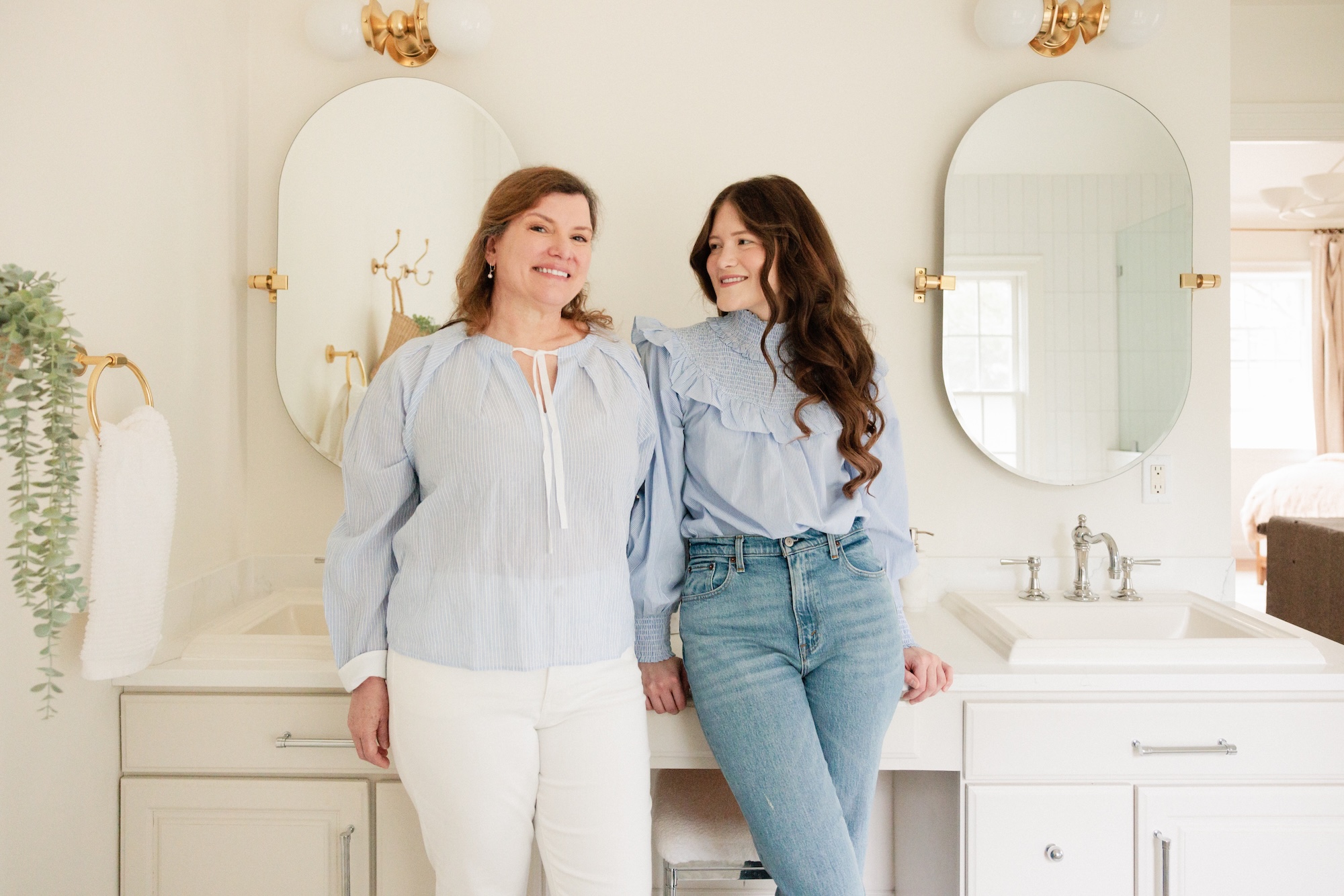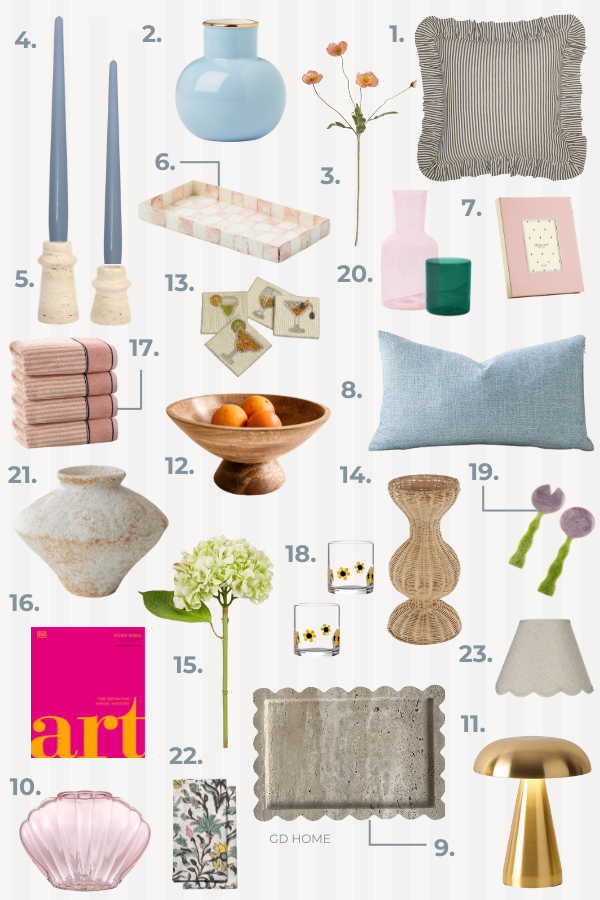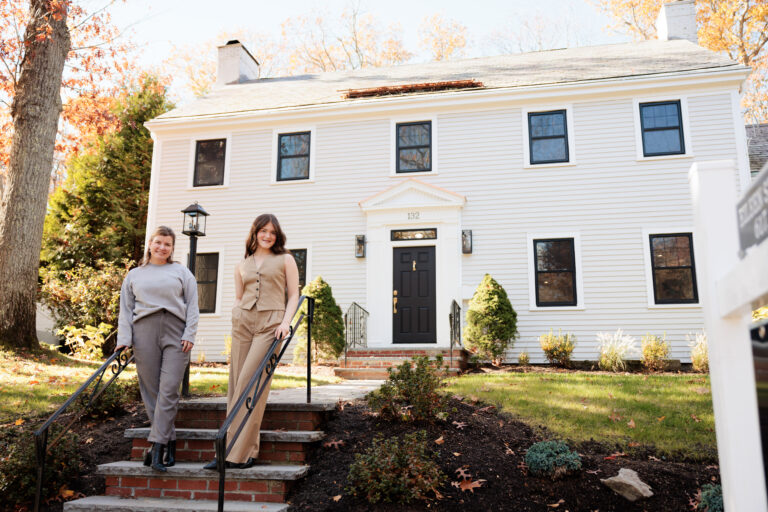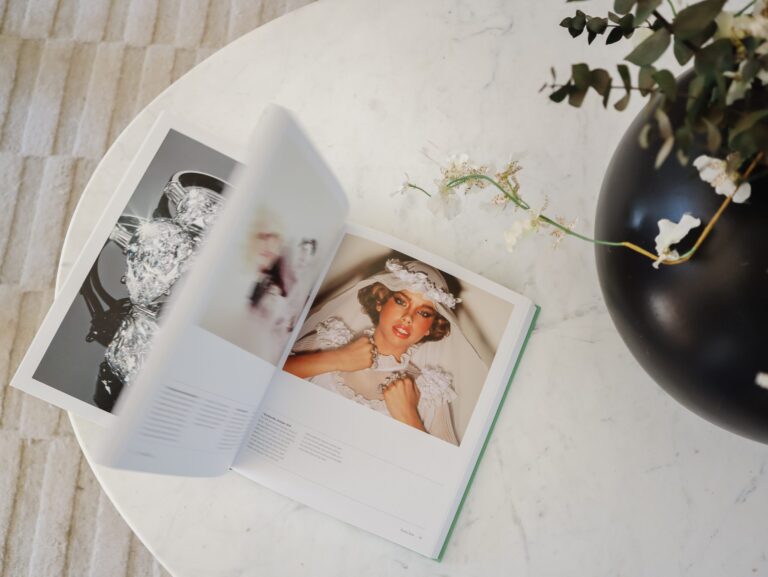Transitional Design Style 101: How to Create a Balanced Home
The transitional design style is the ultimate in design diplomacy—bringing visual harmony between timeless, traditional pieces and sleek, modern elements. Because no one should have to choose just one interior design style for their home, right? Here’s how to incorporate the transitional design style in your own home to create a space that’s uniquely yours.
Homeownership is all fun and games until you’re standing in your new space with a hodgepodge of furniture and no clue where to start. Suddenly and all at once, you’re faced with the realization that you have to determine your design style, pick your color palette, and fill your space with items you’ll (hopefully) still love in 10 years.
Terrifying, right?
What if you choose something too trendy and hate it in a year? Or what if you go the traditional route and your space feels dated before you even unpack the last box?
This is where the transitional design style comes in. It’s that sweet spot between the comfort of traditional design and the clean simplicity of contemporary style. If you find yourself pulled in both directions, transitional design is for you.
There’s a beauty in combining design styles, but there’s no easy-to-follow rulebook on how to make them work together. That’s where I come in! I created a beginner-friendly design guide to help homeowners like you create a home that feels collected, intentional, and cohesive.
I’m breaking down exactly what transitional design style is and how to use it to build a space that feels like you. Let’s bring your Pinterest dream home to life and create the ultimate transitional design style home that can evolve with you throughout the years.
Defining Transitional Design
The transitional design style is a balance of competing elements. It pushes the boundaries of the nostalgic, traditional design we all know and love by combining it with the clean lines and restrained approach of modern aesthetics.
It tows the line between ornate and simple, bold and minimal. Transitional design exists in that beautiful in-between space where a home feels simultaneously new and timeless.
There’s no right or wrong in transitional design, just guiding principles that help create harmony between different design elements. It’s the perfect option for people who want to incorporate family heirloom pieces with new furniture purchases, couples with competing design preferences (let’s face it, compromise is never easy), and design-lovers who just can’t commit to one style (trust me, I get it!)
How to Incorporate Transitional Design in Your Home
Whether you’re embarking on a full home renovation or quick room makeover, here are all the ways you can introduce the transitional design style into your home to create a space that screams you.
1. Lean on Neutrals
When I think of transitional design, my mind immediately goes to Studio McGee. Shae is the undisputed queen of transitional and a huge source of inspiration when working in that style. Here’s an example of Studio McGee’s masterful use of the transitional design style in The Oaks Project (flip through these pictures to be blown away!)
As you’re looking through the different spaces, pay attention to the colors. What stands out (if anything?) What patterns do you notice?
The through line in all the different rooms is the neutral color palette, paired with pops of muted blues and greens. Transitional design style is typically rooted in a neutral foundation (think warm taupes, greiges, creamy whites, and soft grays) to create a sense of calm and cohesion.
Instead of leaning on bold colors, transitional design relies on diverse textures, materials, and color tones to create depth and variety. This approach creates the perfect neutral backdrop for both your traditional and contemporary pieces to shine.
If you’re worried about your space feeling one-dimensional, try a tonal approach. A room with varying tones of warm greige will feel much more nuanced than one with a single flat beige. And don’t be afraid to add thoughtful pops of color through decor pieces that can be swapped out as your style evolves.
2. Mix and Match Furniture
Transitional design is perfect for the girl equally obsessed with the warmth and charm of her leather roll-arm sofa and the sleek, minimal design of her contemporary marble coffee table. This design style is all about mixing and matching different design elements in a way that feels intentional, not random.
When mixing furniture, look for pieces with complementary proportions and shapes. A delicate antique chair might get lost next to an oversized contemporary sectional, but a wingback accent chair would better balance the scale and angular shape of the sectional.
And remember, you don’t need to buy new furniture to incorporate transitional design into your space. If you’re working on a tighter budget or timeline, try updating your space with new fabric. Take a traditional furniture piece, like a wooden dining chair with an upholstered seat, and update it with contemporary fabric (goodbye old floral print and hello crisp white linen!)
3. Layer Textures (Again and Again)
Texture is the secret sauce that gives transitional design its depth. Without bold patterns or vibrant colors to do the heavy lifting, texture becomes even more essential for creating visual interest.
Transitional spaces feature natural stone, woods, leathers, wicker, soft velvets, crisp linens, breathable cottons, and beautiful boucle fabrics. The interplay between these materials creates a richness that takes a life of its own.
If you’re Pinterest board is full of transitional design inspo but you don’t know where to start, try incorporating three different textures in your home and test different combinations to find your fav.
Trust me, this small design upgrade will make your space feel effortlessly layered and thoughtfully collected, without having to reinvent the wheel.
4. Play With Patterns
Transitional design is no stranger to pattern play. The neutral color palette lends itself to fun pattern combinations in furniture, rugs, textiles, and decor. If you look back at The Oak Project by Studio McGee, you’ll notice striped pillows paired with floral prints, Persian rugs juxtaposed with Turkish towels, and grid-patterned throw blankets placed carefully on top of rich, solid accent chairs.
RELATED POST: 31 Neutral Vases Under $31 from Amazon
It’s all about balance. Try pairing a large-scale geometric pillow with a small floral lumbar. Break up solid elements with abstract prints. Incorporate subtle texture patterns like herringbone or basketweave to add visual interest to your space without overwhelming it.
Personally, I prefer subdued patterns because they age better than the trendy ones. Every time I go bold, I find myself reverting back to my old, reliable neutral pillow set that looks good year-round (if it’s not broken, don’t fix it!)
5. Personalize with Home Decor
Less is more when it comes to decor (I feel like Dr. Seuss). In all seriousness, home decor plays a key role in transitional design and shouldn’t be overlooked. It’s like the icing on the cake you worked so hard to bake (wow, I really can’t stop rhyming!)
Rather than filling your space with clutter, focus on the pieces that hold value in your life, whether it’s sentimental, functional, or just beautiful to look at. I don’t necessarily mean minimalism—just intentionality.
RELATED POST: 11 Coffee Table Books for an Elevated Home
Think family heirlooms, throw pillows with mixed patterns, textured blankets, contemporary art with a traditional frame, or mixed materials like stone, wood, and metal. Your home should reflect your style, your story, and your loved ones. Incorporate decor pieces you love to look at, and give them room to shine!

Curating Your Own Transitional Design Style
As much as I love Studio McGee, the goal here is not to copy her interpretation of transitional design. Instead, use it as a source of inspiration to develop your own version of this dynamic design style. The beauty of transitional design is that there’s no right way to do it. It’s a constant push and pull between the old and new, allowing you to test out different combinations, make mistakes, and develop your style along the way.
Your version might lean more traditional or a bit more contemporary—and that’s totally fine! The most beautiful homes aren’t the ones that follow a rigid set of rules or a pre-determined design formula. Rather, they’re built authentically by the people who live in them.
Transitional design style gives you the framework and flexibility to create a home that feels both timeless and personal. As you explore transitional design, allow yourself to evolve slowly. Start by identifying the elements you’re naturally drawn to—the furniture pieces you can’t stop thinking about, the colors that make you feel at home, the objects that hold significance in your life—and let those guide your design decisions.
The goal isn’t perfection. It’s creating a home that supports the life you want to live, that feels both comfortable and beautiful, and that tells your unique story through a balanced approach to design.
This post is all about the transitional design style.










